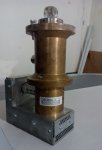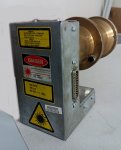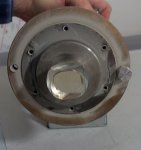You are using an out of date browser. It may not display this or other websites correctly.
You should upgrade or use an alternative browser.
You should upgrade or use an alternative browser.
Film has different density from lead to tail edge
- Thread starter egorus
- Start date
New chemistry does not rule out the processor. Make sure you use the correct developer and parameters are checked - temperature stability, machine speed and recirculation pump condition being the most important. Expose a 50 percent raster rectangle full size to test uniformity ; cut, process, measure center and corners. Expose same job with machine in complete darkness, cut, then intercept the film sheet just before entering the online processor (you have to figure out how) and feed it backwards. Process, measure. If density now increases head to tail you should suspect the primesetter optics, could be dust or autofocus problem.
One more thing I've seen old film processors with worn out rollers and bushings unable to pull film smoothly, you may need to check dev section rollers and gears moving easily driven by hand. Again, the uniformity test I described will tell the drive system condition, look for banding and patterns indicating film is slipping or slowing down.
You won't see much with 10%. Do a 50% grey test (or even 80) full area as advised because it will (mosy likely) rip as 45 degrees making artifacts more visible.
Did you check the processor ?
Did you check the processor ?
Just asking why do you measure density instead of percentage ? I have processed the picture you sent, they threshold as 6.1 and 2.6 percent respectively.10% screen (on picture). Lead and tail edge
That's for you to figure out. I don't know what film processor or bridge conveyor you have. You may use a very dark green light to avoid fogging the film. I hope you understand why is it important to feed a sheet of film rotated 180 degrees.How I would to see in the darkness?
Go to be slipping in the machine during development. I suggest with lights on, ruin a piece of film but watch it carefully though the tanks. Usually, with a recirc pump down, the tailing edge would be the weaker density not stronger.
I'm guessing the film is slipping once past the dev tank and into the fix wash dry. so the tailing edge is getting more dev than the leading edge. Since it isn't streaky, then the slippage must be uniform. Or the dev temp heater is on too much during processing so hotter means more density.
I'm guessing the film is slipping once past the dev tank and into the fix wash dry. so the tailing edge is getting more dev than the leading edge. Since it isn't streaky, then the slippage must be uniform. Or the dev temp heater is on too much during processing so hotter means more density.
egorus, the "air bearings" are actually Teflon pads that separate as the motor spins up creating a cushion of air for the motor as well as provide for braking when the motor spins down. I would not attempt to do anything with it yourself. You should look for someone who is qualified to work on that type of motor.
Similar threads
- Replies
- 1
- Views
- 354
InSoft Automation
|
InSoft Automation Unveils Imp Version 14
Revolutionizing Layout Planning and Automation InSoft Automation announces the launch of Imp Version 14, the latest iteration of its industry-leading cost-based layout planning software. Packed with cutting-edge features, this release redefines efficiency, automation, and workflow optimization for printing and finishing processes. Learn more……. |















